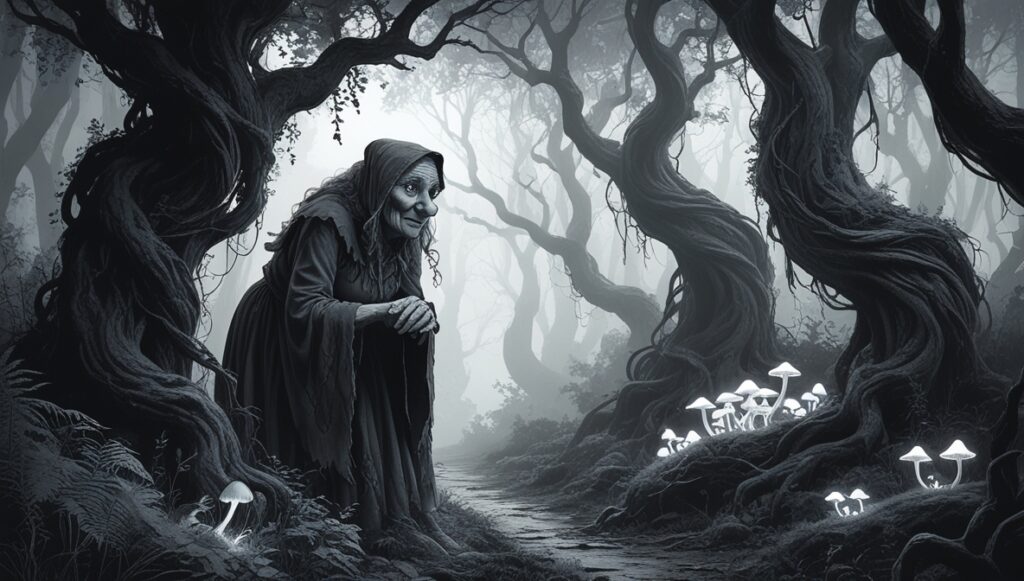The Witches of Montalegre

Perched on the edge of northern Portugal, close to the Spanish border, the town of Montalegre lies in the historic region of Trás‑os‑Montes. Over millennia, invading peoples – Celts, Romans, Visigoths, Suevi – have left traces on its rocky plateau. But amongst this rich archaeological tapestry, local memory clings most powerfully to the lore of witches. Unlike many dampening of witchcraft on the peninsula, Montalegre retained strong folk tradition – especially in its remote hinterlands. Though Portugal’s official Inquisition focused primarily on heresy and crypto‑Judaism, between the late 1600s and early 1700s popular belief in curses and spells endured in regions such as Montalegre.
By the 19th and 20th centuries, the so‑called witches of Montalegre were rarely executed, yet stories abounded of weather‑workers, curandeiras (healers) and hexing women. Locals called upon these figures to remove the “mau‑olhado” (evil eye), treat headaches, or cure livestock. These practices blended pagan rituals with Catholic rites: prayer, holy water, olive oil, and herbs. The mystical arts survived underground – community‑sanctioned, yet fearful of official scrutiny.
Father Fontes and the Revival of Tradition
In the early 2000s, a remarkable transformation took place. Montalegre embraced its hidden heritage by reinventing a centuries‑old superstition as a celebration. At the heart of this revival stood Father António Fontes, a local priest and folklorist. Drawing on accounts of “sex‑of‑the‑devil” rites and bonfires, he convened the first “Noite das Bruxas” on Friday the 13th of October 2002 – a spectacular procession through the town, complete with costumed witches, musical performances and ritualistic queimada (a traditional spirit‑flambé).
By 2025 the event had become Montalegre’s signature festival, drawing about 60,000 visitors across the country and into Galicia. The town overflows with revelry: medieval fairs, witch‑mask parades, pyrotechnics, theatrical “battle of good and evil”, all culminating in priestly blessings and burning of curses. A cultural metamorphosis had occurred – from clandestine folklore to jubilant folklore, celebrated as tourism.
Pagan Echoes and Surviving Beliefs
Although outwardly festive, the Witch’s Night retains darker undercurrents. It nods to pre‑Christian or even Celtic rites once practised across Europe: bonfire purges, moon festivals and earth‑bound magic. Visitors report feeling an electric tension as masked figures dance through narrow streets amid the mist and flame. For many locals, the event remains more than theatre. It is a reenactment of real historical awe – a confrontation with forces believed to lurk beyond mortal control.
Echoes of real folk magic remain in surrounding villages such as Vilar de Perdizes, where Halloween‑adjacent rites—ritual bonfires, symbolic “adoration” of evil—are conducted by families who still believe in otherworldly influence. In the weeks before the big march, some locals privately consult curandeiras for blessings; always in hushed tones, always wary of being seen.
The Castle, its Well and the Enchanted Moor
Atop Montalegre stands its medieval castle, built in the 13th century and restored through the centuries. Hidden within is the legendary Poço da Moura Encantada – the Well of the Enchanted Moor. Local legend holds that a Moorish maiden was entombed alive there after being accused of sorcery or seduction. Some say her spirit still haunts the depths, and that coins and locks tossed into the well vanish mysteriously.
The castle gathers a thousand years of mysticism each time witches fill its courtyards on that eerie October Friday. The stones themselves seem to tremble underfoot, as chanting and drums echo from its walls and the surrounding streets.
Modern Montalegre: Tourism Meets Mystery
Today Montalegre balances tourism and authenticity. Its rich traditions, handicrafts, smoked meats and sausages paint a rural picture as vivid as any legend. The town proudly calls itself the “capital of mysticism” – yet many residents are keen to emphasise their respect for heritage, not superstition. Village guides at the Ecomuseu de Barroso speak of intangible culture – songs, spells, spells used to cure the “cheiro à urina” in livestock, parted locks burnt to ward off envy.
Visitors can explore trails along the Serra do Larouco and Pontes da Misarela, where spirits are said to linger and fog banks roll like restless phantoms. Wildlife, moss‑laden boulders, and tell‑tale footprints become elements in a living folk drama.
How to Visit Montalegre and Experience its Witchcraft Heritage
Montalegre is easily reached by road from Porto or Braga; the nearest major stations are in Vila Real. The ideal time to visit is either in spring or autumn, but for the full witchcraft experience plan around a Friday that falls on the 13th – the town marks these dates with vibrant street rituals, typically twice yearly. Arrive before 13:13 to watch the ouverture: fireworks, medieval market stalls and priests carrying queimada through town. After dusk, join the crowds winding to the castle, where the “confrontation of good and evil” is played out amid torches, chants and bonfire smoke. Outside festival dates the castle museum and Poço da Moura are open daily, and trails in the Peneda‑Gerês National Park reveal the natural landscape that shaped Montalegre’s mystical past.
Whether you’re a folklore enthusiast, paranormal investigator, or simply curious traveller, Montalegre offers a rare window into rural Portuguese witchcraft. Amid medieval walls and mist‑shrouded hills, you come face to face with the living legacy of witches – not burnt, but remembered, and celebrated.
